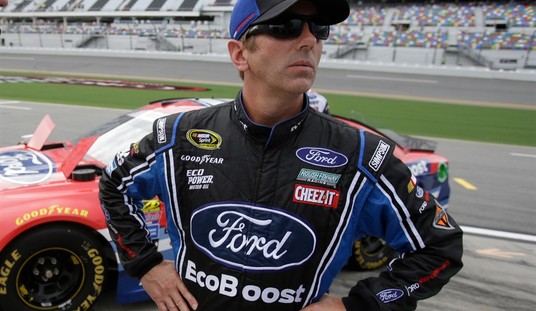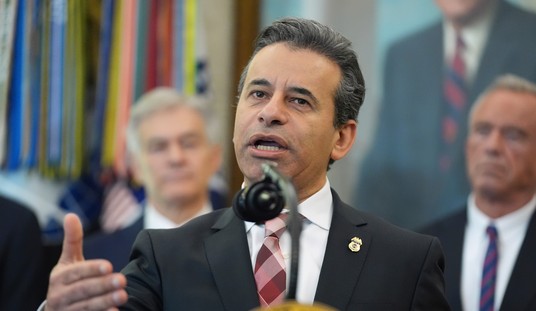Teachers are victims of the dysfunctional government school system just as much as students. In a new Friedman Foundation study, my colleague Christian D’Andrea and I use federal data to document the poor working conditions for teachers in public schools, and the superior teaching environment in private schools.
Reformers normally focus on the mediocre results we get from the government education monopoly — the millions of children who lose their futures because we entrust their schooling to a bureaucracy with little incentive to provide good services. But you aren’t likely to get better learning until you get better teaching, and reformers would be wise to pay more attention to how the government monopoly warps the teaching profession.
In our study, we use data from a huge federal survey to compare working conditions for public and private school teachers. Public school teachers have lower job satisfaction, less autonomy, less influence over school policy, less ability to keep order, less support from administrators and peers, and less safety. Just about the only thing they have more of is burnout.
Public school teachers lack autonomy and influence. They are much less likely to have “a great deal of control” over selection of textbooks and instructional materials (32 percent v. 53 percent) and content, topics, and skills to be taught (36 percent v. 60 percent). And they are much less likely to have “a great deal of influence” on performance standards for students (18 percent v. 40 percent) and curriculum (22 percent v. 47 percent).
They get less support from administrators. They are much less likely to strongly agree that they have all the textbooks and supplies they need (41 percent v. 67 percent) and are less likely to agree that they get all the support they need to teach students with special needs (64 percent v. 72 percent). This in spite of the fact that public schools get nearly $11,000 per student and private schools charge an average tuition of only $6,600. They are less likely to strongly agree that their principals clearly communicate what kind of school they want (56 percent v. 69 percent) and recognize staff who do a good job (33 percent v. 45 percent). And they are less likely to strongly agree that their principals back them up when they need support for disciplining students (55 percent v. 68 percent).
They also get less support from peers. Public school teachers are much less likely to strongly agree that there is a great deal of cooperation between staff members (41 percent v. 60 percent), that their colleagues share their values and understanding of the core mission of the school (38 percent v. 63 percent), and that their fellow teachers consistently enforce school rules (29 percent v. 42 percent).
The stronger support for student discipline among both principals and peers probably helps explain why public school teachers are much more likely to report that discipline problems impact their work. They are more likely to report that their classes are disrupted by student misbehavior (37 percent v. 21 percent) or tardiness and class cutting (33 percent v. 17 percent). Acts of disorder are far more common on a daily basis; fights, theft, vandalism, drug and alcohol use, and bullying all occur at least three times more often in public schools.
And public school teachers are less safe. They are more likely to be threatened with harm by a student (18 percent v. 5 percent) and more likely to be physically attacked by a student (9 percent v. 3 percent).
All this helps explain why public school teachers are less satisfied with their careers. Private school teachers are much more likely to say they will continue teaching as long as they are able (62 percent v. 44 percent), but public school teachers are much more likely to say they’ll leave teaching as soon as they are eligible for retirement (33 percent v. 12 percent).
And there’s a reason why “burnout” has become a staple topic of discussion when it comes to public school teachers. For example, they are twice as likely as private school teachers to agree that the stress and disappointments they experience at their schools are so great that teaching there isn’t really worth it (13 percent v. 6 percent).
That is really a shocking number. One in eight public school teachers says teaching just isn’t worth it. By those odds, if you get twelve teachers in your twelve years of schooling, you have an 80 percent chance of getting at least one who thinks teaching just isn’t worth it. Many will get more than one.
Everyone knows a monopoly is bad for the people who rely on its services. But monopolies are also bad for the people who work for them. Just like the monopoly’s clients, its employees have few alternatives. If they’re not treated well at work, they can’t go work for a competing employer. That means the monopoly doesn’t have to worry about keeping them happy.
And the education monopoly also locks out parental pressure for better teaching, which is probably a factor in improving working conditions for teachers in private schools. Public schools are government-owned and government-run, so the main pressure on them is political imperatives. The main pressure on private schools is keeping parents happy. Given that parents primarily want better teaching, which of those two options do you think is better for teachers?
Unfortunately, we’re not accustomed to thinking of the government school system as a monopoly. But that’s what it is. Of course, private schools do exist. However, the term “monopoly” applies to any dominant provider that maintains its dominance not by providing better service, but by making it impossible for other providers to challenge its dominance, forcing them to survive by serving niche markets. The classic example of monopolistic behavior is providing a service for less than its cost so that no one else can seriously compete — and that is exactly what the government school system does.
Milton Friedman once made this point by asking what would happen if government gave away free hot dogs on every street corner. Most private vendors would go out of business, and government would have a hot dog monopoly even though private stands were still legal. This, Friedman said, is exactly what has happened in education — the private schools we have now are the rump left over after government has demolished the market.
Friedman’s example could be expanded. Let’s say government couldn’t sell kosher hot dogs due to First Amendment concerns. And some wealthy consumers would pay extra for hot dogs with prestigious brand names. So religious hot dog stands and high-priced premium hot dog stands could stay in business in spite of the government monopoly by serving niche markets. That’s the private school sector today — the large majority are low-cost religious schools, and virtually all the rest are either high-cost prestige schools or schools that serve other niches, such as special education.
For decades, Herculean efforts to improve the government school system without changing its inherent incentives have failed. The government monopoly simply will not reform as long as it stays an unaccountable monopoly.
Meanwhile, the evidence consistently shows that vouchers deliver a better education to those who use them, and the competitive effects improve public schools as well. The results so far have been moderate in size, because the trials so far have been moderate in size. But the prospect for dramatic reform is there, and the political prospects for getting it are good, even in spite of the shenanigans we’re now seeing in D.C. and elsewhere. The older, more narrowly limited voucher experiments (D.C., Milwaukee) are vulnerable, because few benefit from them. But the newer, broader programs (e.g., two programs in Georgia) are blazing the way towards universal choice.
Right now, teachers and parents are usually at odds with each other. That’s because the monopoly system leaves parents with no way to control their children’s education other than to harass and pester their teachers. But parents ought to be the best friends teachers ever had. When you compare the working conditions for teachers in public and private schools, you see that school choice isn’t just about saving children from the government monopoly. It’s also about saving the teaching profession.









Join the conversation as a VIP Member